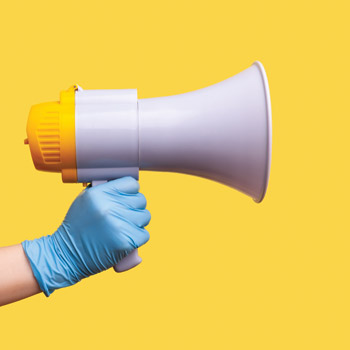Q&A: Cannabis use increasing among older adults
Cannabis use is on the rise among older adults, by almost 50% from 2016 to 2018, even in states where it hasn't been legalized for medicinal or recreational use.
Most U.S. states and the District of Columbia now allow cannabis for medical reasons, recreational use, or both. But information on who's using the drug and how they are using it may still be lacking, especially among older adults. A recent study published as a research letter by Annals of Internal Medicine on Sept. 1, 2020, tried to fill in some of the gaps by using data from the Behavioral Risk Factor Surveillance System (BRFSS), a random-digit telephone survey whose estimates are generalizable to the U.S. adult population.
Coauthor Bill Jesdale, PhD, and his colleagues were specifically interested in looking at cannabis use in nursing home residents, their primary area of research, but found that no data on this group were available. “So we said, ‘What's the first thing we can do? At least look at the prevalence of use among older people,’” said Dr. Jesdale, an epidemiologist in the UMass Worcester PHARE (Pharmacy, Health Services, Aging Research, Epidemiology) Study Group at the University of Massachusetts Medical School.

The study included 171,507 survey participants from 2016 to 2018 who were ages 55 years or older and lived in the 19 states and two territories that opted to include a module in the BRFSS on cannabis use. Participants were asked how often they had used marijuana or hashish in the past 30 days. Average prevalence of cannabis use for all respondents across all study years was 4.9%, with the proportion of men reporting use twice as high as that for women.
Among the whole study sample, prevalence increased from 4.2% in 2016 to 5.9% in 2018. In participants ages 65 to 69 years, use increased from 4.3% to 8.2% in men and from 2.1% to 3.8% in women, with 26.4% of participants in this age group who reported cannabis use saying they had used the drug on all 30 of the previous days. Cannabis use increased in all states in the survey, including those where no type of use was legal. Dr. Jesdale spoke with ACP Internist recently about the study's findings.
Q: Did you expect your results, or did they surprise you?
A: We were definitely surprised by how rapid the increase in reported use was. I mean, we were looking at just a three-year interval from 2016 to 2018, so we were very surprised to see the prevalence of reported use increase by almost 50%, almost doubling.
Q: What could be some of the potential reasons for that increase?
A: This was secondhand, secondary data, so we weren't doing interviews with people. However, it's quite possible that people are returning to use; that is, people who used marijuana in their youth are now returning back to it now that it's more available. It could be that people are more willing to report use. We really can't tell the difference between those two.
Q: Can you talk a bit about how the increases differed in states where cannabis was legal and where it wasn't?
A: There was definitely a lower baseline of reporting, as you go across that gradient from adult use, to medicinal use, to no use being legal. But starting … from those baselines, they all increased in about the same proportion.
Q: What do you think might be some reasons for that? Could there be a trend toward more acceptance of marijuana use, even in states where it's not considered legal?
A: There's a greater awareness of use, less stigma than there had been in the past. And that stigma has reduced considerably, even in a short period, as you see more and more states adopting legal adult use.
Q: Our cover story in this issue talks about screening for unhealthy drug use and notes that it may be helpful to ask about marijuana separately from other drugs. What are your thoughts on that?
A: A lot of people perceive marijuana as a very healthy drug. I don't know that I can take a position on that, because I don't study the health effects of marijuana. … But part of the process of legalization has been through the route of treating marijuana as medicine, and so that's why you often see steps into medicinal marijuana first. Those perceptions hang on, that it's not a drug, that it's medicinal.
Q: In your study, there were differences in rates of reported use between men and women. What do you think is behind that?
A: Men were more likely to report use and women were less likely to report, but all of them increased in about the same proportion. It's possible that men are more willing to disclose, but that would be going beyond what we were able to actually study.
Q: What other types of research might be needed in this area?
A: We have very little understanding of how cannabis is used for management of pain or nausea or any of these other common symptoms that you see in nursing home residents. So it's a big black box about what people are actually doing, and we really need to open up that black box in order to understand, to do the kind of efficacy studies, vigilance for side effects [that] everyone really wants to know.
Q: When you say open up that black box, how could that be done?
A: Well, that is a bit more challenging. It's not a recorded prescription. You'd have to do some surveying of residents, and that's very time consuming. In terms of nursing home research, there's a document called the Minimum Data Set, which asks about all kinds of things, including your preference for music and all kinds of things related to care in a nursing home. There's very few substance use questions on there. There's one about tobacco use. Having a question about use of marijuana in that form would be a huge benefit in trying to figure out what people are using it for and how it's working for them.
Q: Is there anything physicians talking to their older patients about cannabis use could take away from your findings?
A: For one thing, the increased use, or the increased reporting, indicates to me that older people are more willing to discuss their use of marijuana. As with any number of other topics, when a clinician comes into that discussion with an open mind towards answering the patient's questions, rather than deciding that it is bad, that's going to be helpful in fostering that relationship, and figuring out how to address the patient's needs.





